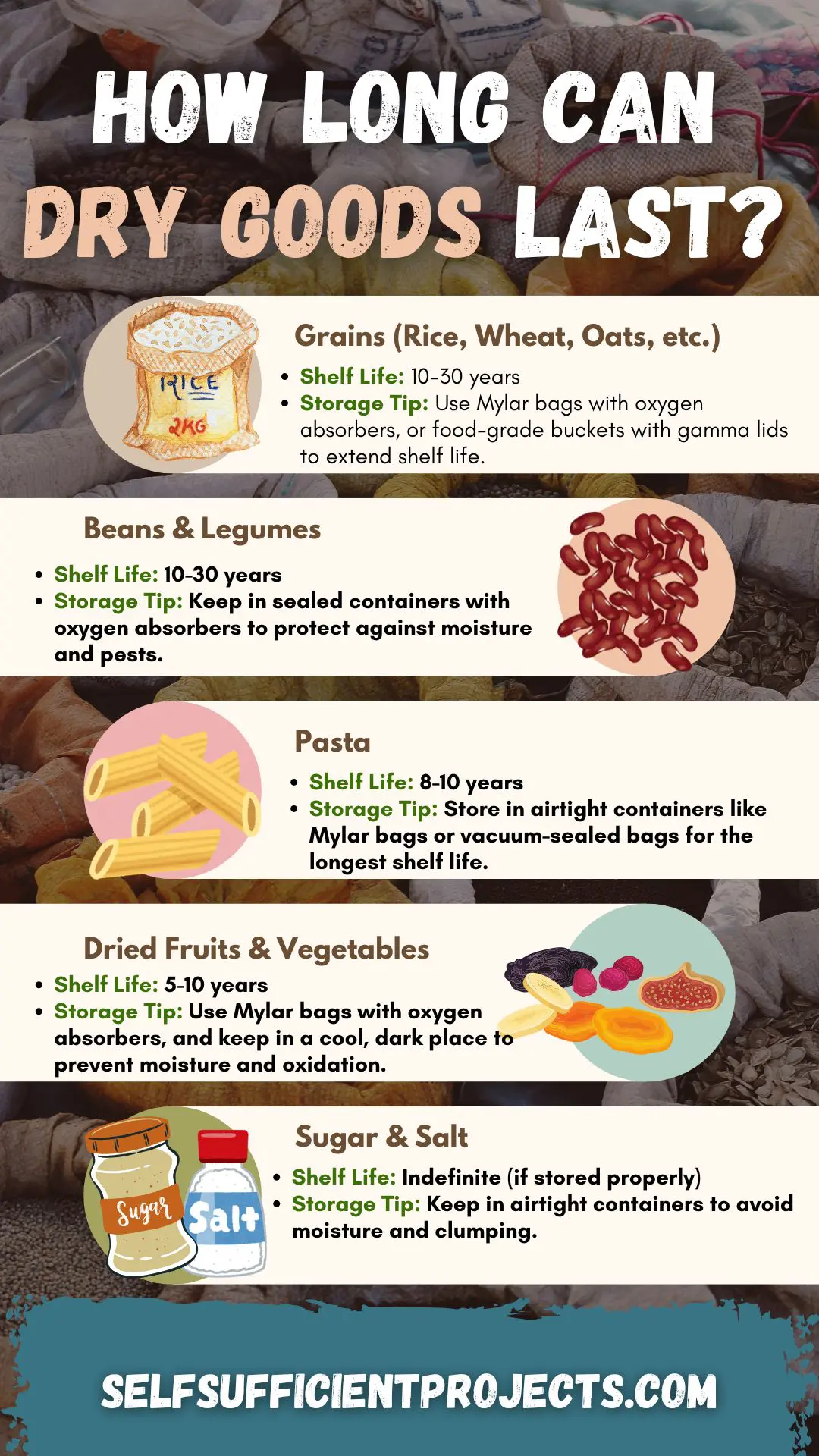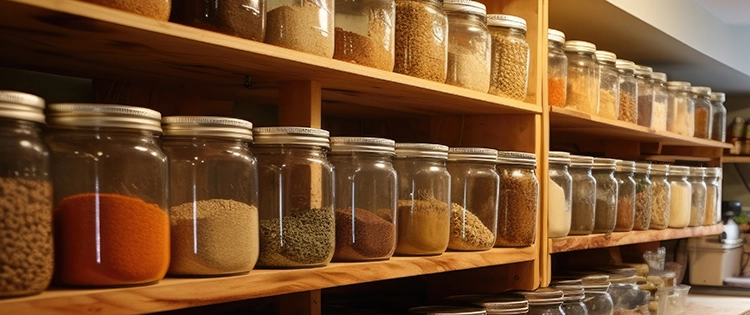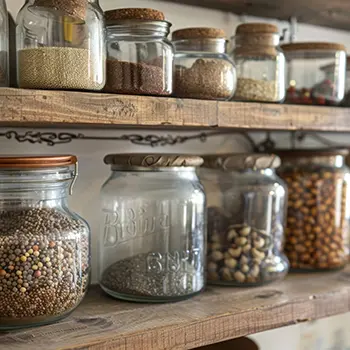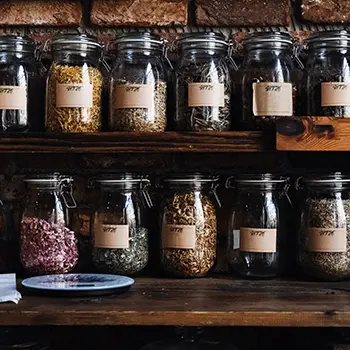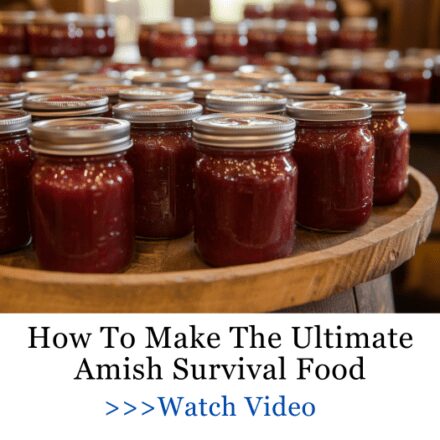Dry storage is one of the greatest achievements of humankind. Drying fruits, vegetables, meats, and grains until they’re shelf-stable for months, years, or even decades is an incredible achievement. Whatever you do, do not store your dry goods like this!
Unfortunately, stopping and considering such things tends to be a huge problem. One that also turns up when we start trying to figure out where to put out huge hauls of dry goods.
Whether the problem is storage space in a tiny home on a homestead or simply miscalculating the ability of your storage area to keep your dried goods intact, we have all had our failures and our accidents.
Today, we’ll look at some places not to put those wonderful bounties if we want to keep them around for a good, long while. So let’s get started.
Don’t Store Your Dry Goods Above the Stove
“Ah, but there is cabinetry above the stove”, you say to yourself. “Surely, this is a great place to put our noodles, fruit leather, and so forth.”
Not so much.
The biggest problem in putting your dry goods above your stove is that you are likely to cook on that stove. Sure, you have problems like moisture or heat seeping into the wood and trying to ruin your good, dried products.
That may be an obvious thing to most people and a reason why they would consider putting those products above the stove as a last-ditch situation.
Another big thing most people don’t consider is that you are cooking on that stove. Didn’t I just say that? What do you do when you cook?
Personally, I heat items. I reduce their moisture content. And last but not least, I… put flavorings on the food to make them taste good.
That’s right, your dry goods will taste just like your sausage frittata in no time if you store them above the stove. Wildly enough, you may even end up with rancid oils clinging to things like pasta, even pasta kept in the manufacturer box, if you decide to store them above the stove.
These oil particles from your meat can easily invade cabinetry, even when closed, near the stove or oven, and settle on (and in) flour, noodles, dried meat, etc, and cause you and your family to get sick.
If there is absolutely nowhere else to store your dried goods, put them in air-sealed containers and rotate them out pretty quickly.
Don’t Store Your Dry Goods In the Basement
You know, basements are fantastic for storing canned goods if proofed from leaking and fully finished. The big problem comes when you start putting dried goods down there.
Some dried goods can be stored in your basement. Garlic or onions, for example, will usually be fine in a mildew-free basement for a long time.
However, when it comes to grain-based or fruit-based dried items, you may run into issues.
While moisture can cause problems, many basements are pretty moisture-proof by the time you’re ready to store things.
The bigger issue here is pests. A sealed basement is great, but rodents and insects can easily get in through above-ground windows. Anything that moves will try to make your basement home.
While pests typically avoid alliums and herbs, they’ll go straight for meat, grains, fruits, and vegetables as soon as they smell them. Be sure to store your dry goods securely to keep them safe.
If you must store your dried goods in the basement, we strongly suggest using glass and metal containers to protect them, if at all possible. Though many rodents can chew through metal (eventually), you will likely see the gnaw marks before they can do significant damage to the food inside. And maybe throw down some mouse traps.
Just make sure that you check them frequently so you can be as humane as possible when dispatching them. After all, nobody deserves to suffer; even a mouse.
Frozen Issues
We strongly recommend against freezing dried goods unless they are specifically freeze-dried. Why? Many people toss dried items into the freezer without thinking about it. But that’s not the best idea.
The whole point of shelf-stable products is to avoid refrigeration. While fridges and freezers are fine for fresh foods, they can cause problems with dried products. The issues vary depending on what you’ve frozen.
Most likely, you’ll end up with a soggy, gummy mess when it thaws—if it even freezes properly. Drying removes moisture, so only a small amount remains, which can freeze. But the rest of the product shouldn’t.
Related: Never Store These 10 Foods Together
Rather than freezing your dried goods, which can ruin them, it’s better to store them properly. After all, you’ve likely put a lot of effort into preserving them, so losing them would be a huge disappointment.
We don’t want you to lose goods you’ve spent time or money on—both are valuable!
Our advice? Store your dry goods at room temperature, in a cool, dark place, and in a container that keeps pests out.
Keep them far from the freezer, fridge, or any place where moisture can build up.
Where to Store Your Dry Goods
-
Mylar Bags with Oxygen Absorbers
Mylar bags are great for keeping dry goods fresh because they block light, moisture, and air. Toss in an oxygen absorber, and it helps prevent spoilage and bugs. Seal the bag with a heat sealer, then store it in a food-grade bucket for extra protection.
-
Food-Grade Buckets with Gamma Lids
Big food-grade plastic buckets work well for storing bulk foods like rice, beans, and flour. A gamma lid makes it easy to open and reseal while keeping everything airtight. These buckets keep out moisture, air, and pests.
-
Glass Jars with Tight Lids
Mason jars or any airtight glass jars are great for storing smaller amounts of dry goods. They help keep out bugs and moisture. Just store them in a cool, dark spot, and your food will last a long time.
-
Vacuum-Sealed Bags
Vacuum sealing sucks the air out of the bag, which helps prevent bugs and keeps food fresh. It’s perfect for things like flour, pasta, and dried fruits. Just store the sealed bags in a dry place, and they’ll last for years.
What’s The Shelf-Life If Stored Correctly?
The shelf life of dry foods depends on the type and how you store them. Grains like rice, wheat, and oats can last anywhere from 10 to 30 years if you store them right. The best way to keep them fresh is by using Mylar bags with oxygen absorbers or food-grade buckets with gamma lids, which protect them from moisture and pests. Pasta can last about 8 to 10 years when kept in airtight containers like Mylar bags or vacuum-sealed bags.
Beans and legumes also last a long time—about 10 to 30 years—if you keep them in sealed containers with oxygen absorbers. Flour has a shorter shelf life: white flour lasts about 1 to 2 years, and whole wheat flour lasts about 6 months to a year. To make it last longer, freeze the flour for 72 hours first to kill any bug eggs, then store it in airtight containers like Mylar bags or glass jars.
Dried fruits and veggies can stay good for 5 to 10 years if stored in Mylar bags with oxygen absorbers in a cool, dark place. Sugar and salt can last forever if kept in airtight containers and protected from moisture.
Coffee lasts 1 to 2 years if it’s ground and 2 to 3 years for whole beans. To keep it fresh as long as possible, store it in vacuum-sealed bags or airtight containers.
When you store dry foods properly—keeping them cool, dry, and dark—they can last much longer than expected, so you can stock up for the long haul.
How do you store your dried goods? Is there a particular error or failure that you’ve had happen to you in the past that we didn’t cover? We’d like to hear about it in the comments down below; remember, we all learn from each others’ mistakes. And, as always, Happy Homemaking.
Plant These Now For An Early Summer Harvest
The Natural Painkiller that Grows in Your Backyard (Video)
What You Should Stockpile For The Next Great Depression
9 Old Recipes Every True Homesteader Should Know
How to Make the Most of Harvest Time During the Food Crisis
